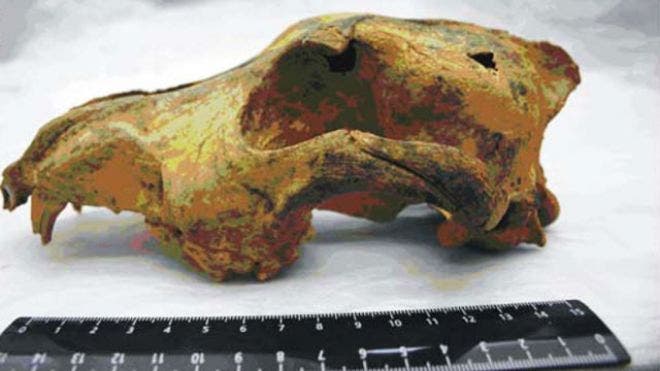
A profile of the Siberian dog skull shows the shortened snout and crowded teeth that helped scientists determine this ancient animal was domesticated. Credit: Nikolai D. Ovodov
The bond between man and dog has always been extremely evident, an unconditioned friendship, at least from the dog’s part, which has lead the latter to be rightfully often referred to as man’s best friend. But how, why, and when did dogs become such a significant part of our lives. By domesticating farm animals like cattle, pigs or sheep, man has come a long way in sustaining himself, and one can assert that both animal domestication and farming played a major role in man’s socio-cultural and psychological evolution. But dogs? While some parts of the world today consume dog meat, and it’s been proven that some North American cultures devised clothing from fabric made out of dog hair, it’s rather safe to say that dogs weren’t domesticated with a practical goal in mind. Man’s ubiquitous need for company might have been the cause for the first domestication attempts, and one of the first such acts might have taken place in the freezing solitude of a cave in the middle of the last ice age.
Recently, scientists have come across a 33,000 year old dog fossil in Siberia, that bears the oldest signs of domestication by man so far found. A similar find was found in Belgium, when a dog fossil from the same period was discovered. When correlating the two, it seems that dog domestication didn’t result from a single event that than sparked a cultural phenomenon, but rather that it came naturally for man to befriend canines, as these isolated fossils suggest.
“Both the Belgian find and the Siberian find are domesticated species based on morphological characteristics,” said Greg Hodgins, a researcher at the University of Arizona’s Accelerator Mass Spectrometry Laboratory and co-author of a study reporting the find.
“Essentially, wolves have long thin snouts and their teeth are not crowded, and domestication results in this shortening of the snout and widening of the jaws and crowding of the teeth.”
The Russian-led team of researchers discovered the 33,000 year old specimen in the Altai Mountain – a perfectly preserved skull, which allowed the scientists to make multiple measurements of the skull, teeth and mandibles. To determine the skull’s age, radiocarbon dating at the University of Arizona’s Accelerator Mass Spectrometry Laboratory was used. Results showed that it’s from just before the peak of the most recent ice age. It was also shown that its snout is similar in size to fully domesticated Greenland dogs from about 1,000 years ago. Neither the Belgian nor the Siberian domesticated lineages appear to have survived the period, Hodgins said.









